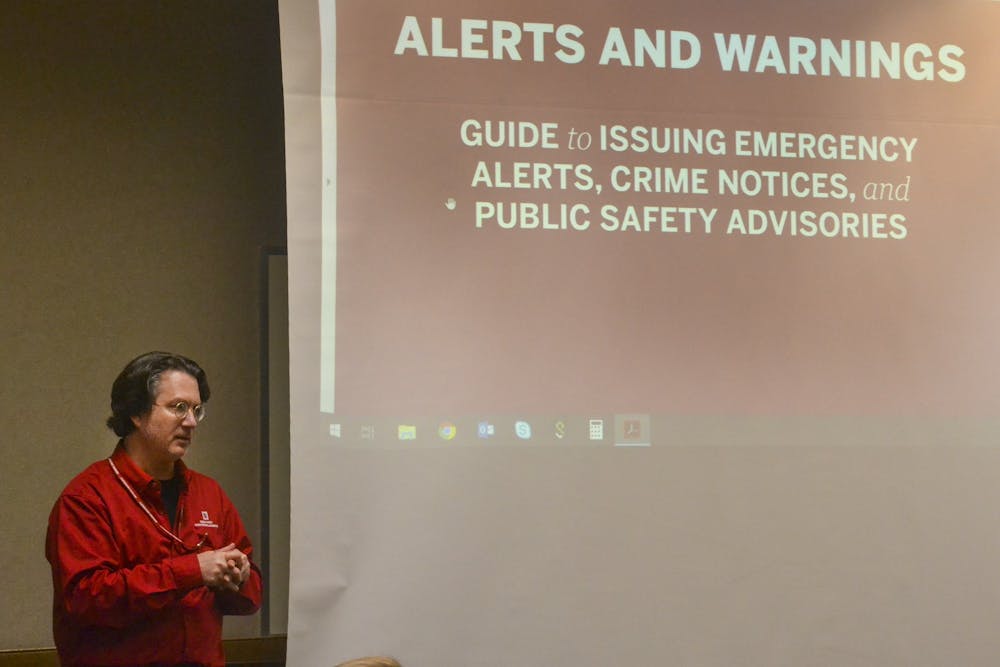IU’s public safety compliance director spoke to students Wednesday evening at the Indiana Memorial Union about the differences between IU notifications, the process of sending them out and how the system works.
The event was organized by IU Student Government. IUSG director of student life Madeline Dederichs said the event was meant to explain to students what the IU notifications are, why they are sent out and how students should respond to them.
Dederichs said IUSG thought it was necessary to plan the event after the October Brickhouse shooting in Bloomington.
She said an alert was not sent out because the shooting took place at a location outside of IU notifications' boundaries, and Bloomington Police Department had the situation under control. However, she said there was a lot of confusion following this incident, and many students felt they should have been made aware of the situation.
Director for Public Safety Compliance Rick Erny’s presentation reviewed the three different types of notifications sent out through IU notifications: emergency alerts, crime notices and public safety advisories. The Jeanne Clery Act requires universities to send out emergency alerts or crime notices if a Clery reportable act has occurred within the institution’s Clery boundaries.
Clery reportable acts include homicide, robbery, sexual assault, aggravated assault, domestic or dating violence, stalking, arson, burglary and motor vehicle theft.
The Clery boundaries for IU include the areas on and off campus that are owned by IU. This includes residential housing, academic buildings and off-campus houses owned by IU, Erny said. He said the boundaries do not include anywhere that isn’t owned by IU such as greek housing owned by sororities and fraternities.
He explained the flowchart for deciding when and how to send a notification in order to avoid frightening students without cause. He said he had no idea how much goes on behind the scenes to keep students safe until he started his job.
“Anything that threatens our students we think is important,” Erny said in an interview with the Indiana Daily Student. “We want to keep our students safe.”
An emergency alert is sent out through IU-Notify any time a Clery reportable act has occurred and there is a serious threat to the health and safety of the IU community, Erny said. Crime notices are also sent through IU-Notify for Clery reportable acts but are sent out for continuing threats to the campus community.
Public safety advisories are sent out for non-Clery reportable acts such as bicycle and backpack theft, coronavirus or other health safety advisories or a crime that occurred outside of IU’s Clery boundaries.
Dederichs said one of the most important things students can do is assist IU Police Department and BPD by doing what they say, whether it be to keep areas clear or take shelter when necessary.
She said it’s important to know what is happening on or off campus so students don’t unknowingly walk into a dangerous situation.
“I think students will be able to benefit the most from this event by recognizing what they should do once they get that notification,” Dederichs said.
IUSG communications coordinator and freshman Anna Dubois said she attended the event because she finds the topic interesting and feels like not enough people know about how the notifications work and the differences between them..
Dubois said she wants to make sure people learn more about IU notifications. She said she plans on using the notes she took at the event to inform her friends about the topic.
“I was just confused about it all,” Dubois said. “I didn’t know enough about it and I wanted to learn more. Tonight just clarified everything.”




